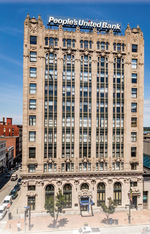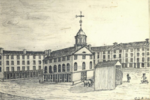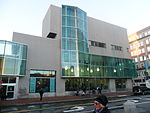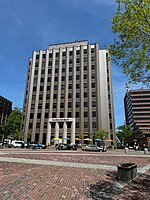Lancaster Block (Portland, Maine)
1881 establishments in MaineCommercial buildings completed in 1881Commercial buildings in Portland, MaineCommercial buildings on the National Register of Historic Places in MaineFrancis H. Fassett buildings ... and 1 more
National Register of Historic Places in Portland, Maine

The Lancaster Block is an historic commercial building in downtown Portland, Maine. Located at 50 Monument Square, it is a fine local example of commercial Romanesque Revival architecture. It was built in 1881 and enlarged in 1908; it is named for Lancaster, New Hampshire, the hometown of its builder, J. B. Brown. it was listed on the National Register of Historic Places in 1982.
Excerpt from the Wikipedia article Lancaster Block (Portland, Maine) (License: CC BY-SA 3.0, Authors, Images).Lancaster Block (Portland, Maine)
Congress Street, Portland
Geographical coordinates (GPS) Address Nearby Places Show on map
Geographical coordinates (GPS)
| Latitude | Longitude |
|---|---|
| N 43.656944444444 ° | E -70.259722222222 ° |
Address
Congress Street 480
04101 Portland
Maine, United States
Open on Google Maps








